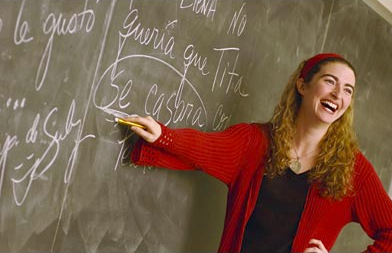I have to admit but as a neophyte teacher it came across my mind what am I doing in this stressful teaching world. Being a self-admitted happy-go-lucky, carefree and a bit of a hedonistic kind of person, I want my life to be worry-free and fun as much as possible. But since I have chosen to become a part of this noble profession, I have to be outside my comfort zone for the sake of imparting knowledge to the learners (wew...). In my almost half a year of teaching, I realized how admirable those teachers who have spent their lives teaching. Those teachers who even have acquired hypertension and other stress-related illnesses because of their job. No wonder that teachers experience burn-out more than any other profession. In relation to this, here are some of the ways in which teachers can fight, avoid or deal with teacher burn-out. I hope that through these, old and new teachers alike will have more drive to teach in spite of all the hardships and demands of the profession. These are adapted of course from various articles I have read from the net suggested and written by seasoned and well-experienced teacher (not yet me...)
- Value your health. Love your body. Don't overdo yourself. Always think of your body (your blood pressure and your heart particularly) when the situation seems uncontrollable. Handle everything calmly and take a deep breath. Don't skip meals because you have to finish a task. Nourish yourself with nutritious food and take food supplements and vitamins if you can afford. Always remember: Men sana in corpore sano (If you don't know what it means, just ask google).
- Don't focus on the distractions too much. Some teachers are usually fund of spending their time and energy to those destructive and misbehaved students. Set aside your energy to more important tasks and activities that will improve learning. If 5% are not participative, direct your attention to the 95% who are willing to learn. Or if your co-teachers and superiors are not in good terms with you, don't mind them if possible and concentrate on your students. I personally believe that I prefer winning the hearts of my students more than those of my superiors or co-teachers.
- Get enough sleep. This will give you more energy to do the things you have to do. This will make you feel revived and fully-charged.
- Learn to accept your imperfections. Sometimes, teachers can get frustrated because they feel that they are ineffective especially in controlling their students. For instance, don't be depressed if your students will not like you because you scolded them, or because you are not their "type". This is one important thing I learned so far from my teaching experience: Not all you students will like you, similar to the common cliche You can't please everybody. Don’t expect to make everyone happy. However, always keep in mind that there are endless rooms for improvement. Together with accepting yourself is the conviction of improving and working out your weaknesses.
- Don’t force yourself to report to your school even when your sick. (You might spread the virus...hehehe). Seriously, make it rather as an opportunity to have rest and restore yourself for your students.
- Relax. There are endless ways to relax. I already have some of these tips. Just click THIS...
- Don’t waste time worrying. We don't know what the future is so what's the use of worry. Be optimistic. Everything will be fine as long as we do things right. Lift everything to God if this will comfort you. If worrying is unavoidable, don't worry BEFORE YOU SLEEP. Worry during the day and not at night. Don't also forget that worrying must also come with possible plans and strategies if everything didn't go quite well.
- Don't assume that you can do things on your own. Avoid your pride and seek the help of others if necessary. Don't feel that you are alone in this world. You have your friends, your family, your boyfriend/girlfriend, your parish priest, you neighbor. The list actually is numerous.
- The logical solution is often the best, but not always. Lady Gaga said in one of her songs that sometimes your decision doesn't necessarily have to be right. As long as you're happy and fulfilled with that decision, go for it.
- Have patience with yourself and others. Everything takes time. Not every situation in life requires immediate actions. Don't rush things. Take one step at a time slowly but surely.
- If you're single, take risk according to one article. I can really relate with this. If you still don't have a family, go out with your friends, have an outdoor adventure and travel to unknown places. Don't be scared to take risk because you have less things to lose compared to those who already have a family to rear.
- Always have a backup career plan if things don’t work out. Though this is a worst-case scenario, shifting a career would be good if this can make you life happier and healthier. But before you decide, always think seven times seventy times seven...Or read my next post...hehehe


































